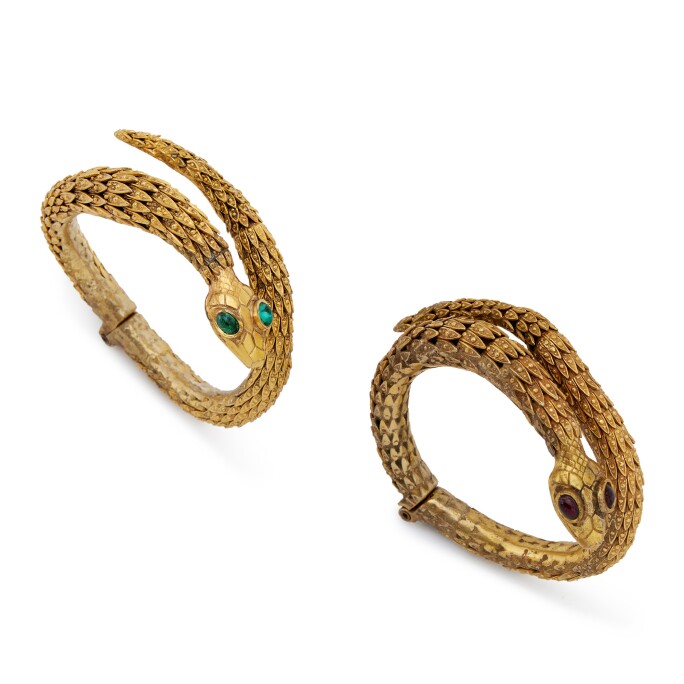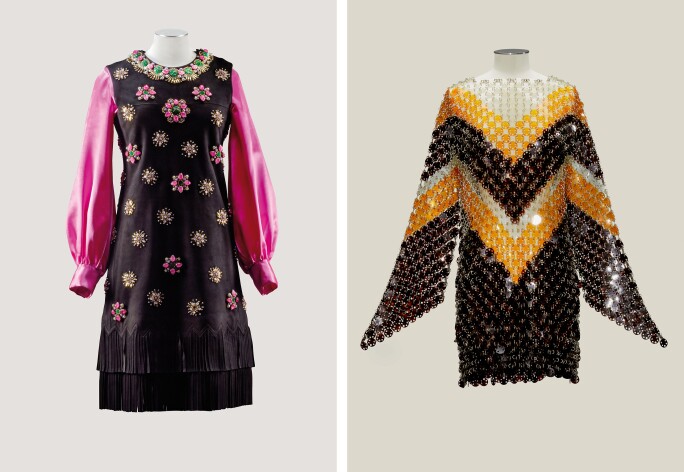F ew French terms are more universally tossed about – and poorly understood – than “haute couture”. The phrase has become shorthand for expensive fashion but it means so much more. Its richly deep history informs and inspires everything from fast fashion to the ready-to-wear designers of today. The evolution of modern-day fashion and even the term “fashion designer” is intrinsically bound with haute couture. Whether you simply enjoy clothes or hope to become a collector of magnificent pieces, it’s important to understand the nuts and bolts of this rarefied section of the industry.
On December 17 Sotheby's is proud to present our second Fashions Icons sale in New York, with a range of extraordinary Haute Couture garments featured. Curated by our global network of Fashion experts, all lots come with assured provenance and detailed collector notes.
The History of Haute Couture

“Haute couture” (which literally translates to “high dressmaking”) as we know it today first emerged in the 1850s thanks to an English dressmaker named Charles Frederick Worth (1825–1895) who founded his atelier in Paris in 1858. This was far before the advent of mass-produced clothing; off-the-rack as we know it now would not emerge until many decades later. Until Worth coined the term “fashion designer,” most women purchased their clothing from dressmakers or made it themselves at home. Worth’s creations, utilising extravagant trimmings and luxurious fabrics, became extraordinarily popular among Parisians and other European aristocrats, as well as wealthy Americans who would travel to Paris to purchase bespoke creations from the House of Worth. The Empress Eugenie (1826–1920), who was married to Napolean III, was one of the more notable fans of Worth and who made him popular amongst her wealthy set.

Worth’s contribution to fashion design and couture is notable not least because he was so prolific, but also because following the establishment of his business came the birth – at his initiative – of the Chambre Syndicale de la Couture, a professional organisation that today, under the appellation Fédération de la Haute Couture et de la Mode (The Federation of Haute Couture and Fashion), sets the standards for the industry. The father of haute couture thereby enabled the rise of other couturiers, notably Paul Poiret who is known for his hobble skirt and harem pant designs; Madeleine Vionnet, beloved for her use of draping and geometric pleating; Mariano Fortuny who was inspired by ancient Greek fashions; and Jeanne Lanvin who got her start creating clothing for her daughter.

The Rules of Haute Couture
By 1945, the FHCM had established a strict code to govern the industry, limiting the number of designers and dressmakers who could legally call themselves “Haute Couturiers.”

An haute couture atelier must:
· Design made-to-order for private clients, with at least one fitting;
· Keep a Parisian workshop (or atelier), employing at least 15 full-time staff;
· Maintain at least 20 full-time technical professionals; and
· Present a collection of at least 50 original designs every fashion season (January and July) of both day and evening garments.
These rules mean that, despite what red carpets may suggest, the majority of fashion houses today cannot call themselves haute couturiers. Even if a designer produces a one-off couture piece for a celebrity or a bride, it will not be considered haute couture unless the atelier has previously received this designation.

The Designers

It was in the post-war period that haute couture became the cultural powerhouse that it is today, with designers outfitting Hollywood stars and the political elite, thrusting high fashion into the public eye. Pierre Balmain, Christian Dior, and Hubert de Givenchy were particularly famous for their associations with celebrity. Givenchy’s close relationship with the actress Audrey Hepburn was first captured on celluloid in 1954 for the film Sabrina. But it wasn’t until Breakfast at Tiffany’s (1961) that the partnership turned resolutely iconic, with Hepburn’s little black dresses becoming the stuff of legend.
Dior’s “New Look” – which was characterised by narrow waists and voluminous skirts, breaking from the straight lines of the previous decades – was established by his very first collection in 1947 and went on to pervasively influence the industry. He dressed dozens of well-known names of the day, including the actress Marlene Dietrich and Princess Margaret, who wore one of his confections to sit for her 21st birthday portrait by Cecil Beaton. Dior also famously launched the career of the designer Yves Saint Laurent, whom he hired at the peak of Dior’s popularity to act as his right-hand man.


Today, the FHCM’s member list contains only 15 ateliers, though it has an additional special designation for couturiers who do not show in Paris, as well as “guest members” who are invited to show at the pleasure of the chambre but may not call themselves haute couturiers. Many of its principal members are well known, even to fashion rookies – Chanel, Dior, Givenchy and Jean-Paul Gaultier are examples – but others will be familiar only to those take an active interest in the art of high dressmaking, with Schiaparelli, Alexis Mabille, Bouchra Jarrar and Julien Fournié, among them.
Though celebrities have helped haute couture become famous in its own right, the industry maintains a discreet side that is arguably even more vital to its existence: private clients. Extraordinarily secretive and exclusive, ateliers have maintained a select group of loyal clientele who build entire wardrobes of custom pieces. Collectors also serve an important role – acquiring and preserving historically relevant pieces that can be displayed in exhibitions and shared with audiences around the world.

Haute Couture at Sotheby’s

Sotheby’s 2015 auction of personal items owned by the couture dealer and fashion antiquarian Didier Ludot, featured more than 170 gems from his Paris boutique. Among the pieces were a Poiret damask satin tunic dress he made for his wife Denise, a sequinned “little black dress” by Chanel owned by the German-French actress Romy Schneider, a Pucci-esque long dress worn by the Duchess of Windsor, and Loulou de la Falaise's Yves Saint Laurent hat. Every single item was sold and so the auction was followed by another in 2017 this time focusing on the “little black dress”. Our favorite? A 1925 Jean Patou Nuit de Chine dress that had been previously exhibited at The Metropolitan Museum of Art’s China: Through the Looking Glass show in 2015.
Ready to start? Catch up on some of the incredible pieces Sotheby’s has sold in the past and keep an eye out for Fashion Icons this December.



Buying and Selling Haute Couture at Sotheby's
Sotheby's global network of fashion specialists offer clients the chance to own rare and unique garments, providing a trusted source of carefully verified pieces from the world's leading couture houses.
- Explore our upcoming auctions, including the Fashion Icons sale in New York on the 17th December
- Speak to our specialists for advice on an auction lot or buy-now listing, or to explore private sales opportunities
- Research your Haute Couture investment using our extensive sale archive
- Browse our range of carefully curated handbag and fashion items available for immediate delivery, all with assured provenance
Trust our worldwide network of leading specialists from a globally renowned auction house with a 280 year history.





